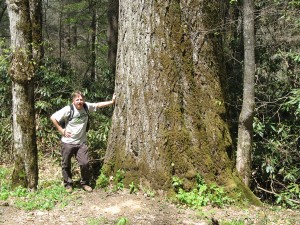In 1987 the USDA Forest Service issued a “final” forest management plan – a plan so vague and so lacking in ecosystem and environmental protections that conservationists and environmental organizations across the country denounced it. The Wilderness Society (TWS), to point out many of the shortcomings of the proposed rule, especially as it pertained to the Pisgah and Nantahala National Forests, published North Carolina’s Mountain Treasures in 1992. According to the North Carolina’s Mountain Treasures website at http://www.ncmountaintreasures.org/info/about.html, “Its purpose was very specific: to arm citizens with accurate, detailed, current information they could bring to bear to help protect deserving wildlands and other ecologically significant areas on these forests.”
Here we are a decade later and finally, after two or three more failed efforts at crafting a forest management rule, it looks like the Forest Service has a working rule in place to replace the 1982 rule. The management rule is a template that sets the parameters for creating actual national forest management plans specifically for each national forest. And with the Nantahala and Pisgah National Forests awaiting new management plans, TWS has prepared an updated North Carolina’s Mountain Treasures: It’s purpose, “…to give the public sufficient information about the forests’ special places to speak effectively on their behalf.”
Although there is a rule in place, plans for Pisgah/Nantahala may be 12 to 18 months down the road. According to Brent Martin, Southern Appalachian director with TWS, the delay is because the Forest Service is searching for a replacement for Marisue Hilliard, who retired as supervisor of the Pisgah/Nantahala National forests in January. Martin said that while TWS was disappointed in the delay, it, “…will allow us to garner more support for protection of Mountain Treasures, which we can always use more of.”
TWS and its partners believe that many ecologically diverse and important wildlands throughout the Nantahala and Pisgah National Forests lack adequate protection and these areas are the focus of the new edition of North Carolina’s Mountain Treasures. This edition of “Treasures” focuses on seven landscape conservation areas that TWS and its partners feel are in urgent need of protection. Those areas are: Unicoi Mountains Conservation Area, Nantahala Mountains Conservation Area, Highlands Conservation Area, Balsam Mountains Conservation Area, Black Mountains Conservation Area, Linville/Grandfather Mountain Conservation Area and Unaka Mountains Conservation Area.
According to Martin it was a long (4 years) arduous process to come up with the latest edition of NC Mountain Treasures. It included meetings with about 40 partners plus public comment and collaboration. Clearly, some wonderful and special places across the Nantahala and Pisgah forests are not included but TWS and its partners hoped to highlight areas that lack any kind of long-term protection and are at risk.
North Carolina’s Mountain Treasures points out the need for protecting wildlands across the region and illustrates many of the threats – climate change, invasives, fragmentation and poor recreational management – facing these areas. Interested parties can find North Carolina’s Mountain Treasures on line at http://www.ncmountaintreasures.org/info/about.html or visit North Carolina’s Mountain Treasures Facebook page, which is in the process of being updated to be even more inclusive.
Hard copies are currently available in some area libraries (check yours) and will soon be available in most, if not all public libraries across Western North Carolina.
According to Martin, “Mountain Treasures represents over 300,000 acres of core conservation areas on public lands in the Nantahala-Pisgah National Forest. That’s out of 1.1 million acres of public land, of which currently only about 65,000 is designated Wilderness. We feel that all of these lands deserve some high level of protection in the upcoming forest plan revision. For example, they could be recommended as Wilderness, Scenic, Old Growth, or Watershed Restoration areas. I’d like to think that public support for these areas will lead to the eventual passage of North Carolina’s first Wilderness legislation in over 25 years.”

